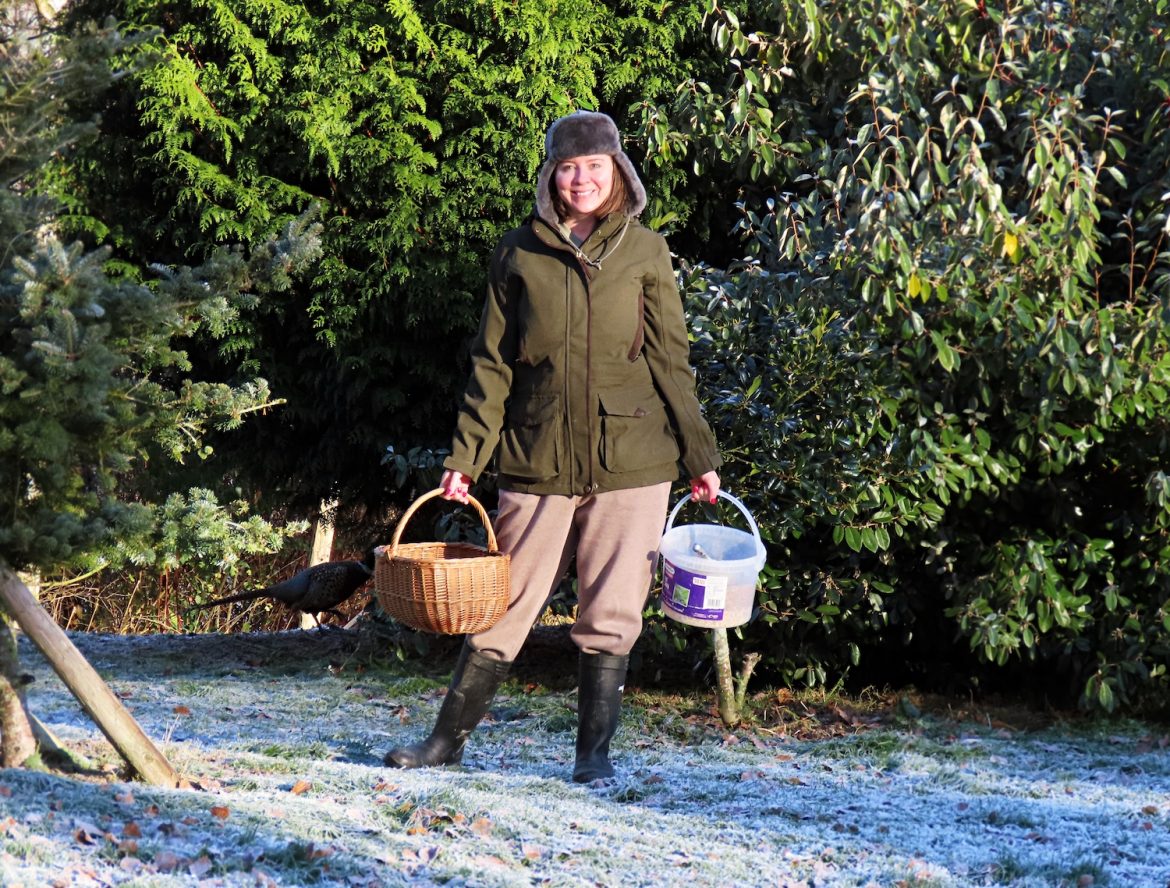We are surrounded by fields that are home to all kinds of wildlife. Over the past three years, four wild pheasants have settled on our smallholding and very much call it home.
Kirsten has now been feeding them for two years over winter when food becomes scarce and the ground becomes hard or iced over. While they’re not tame, they definitely associate us with food, so when we go out and they haven’t been fed, they follow us chattering and reminding us it’s breakfast time.
Kirsten has named the pheasants Pantaloons (he’s the alpha male with notably “baggy” thighs), Blondie (female #1), Chocolate (female #2) and Fleabag (the other male who wasn’t looking his best last year).
Pantaloons and Fleabag have an odd bromance where they’re usually good mates, but every now and again Pantaloons has to reassert himself and remind Fleabag who the top dog is and proceeds to chase him around the fields before they settle back into normality.
This year, the pheasant population has grown as temperatures have plummeted, and we’ve got about eight new males, but Pantaloons isn’t too fussed and he still looks after Chocolate and Blondie, and keeps the new boys in check.
Kirsten has set up a feeding station where the pheasants get their daily serving of cracked wheat and split maize. What’s really nice about pheasants is that they eat until they’re full (which isn’t a lot) and never begrudge other feathered creatures (robins, blackbirds and moorhens) sharing their stash.
Facts about pheasants
Pheasants are a group of birds that belong to the Phasianidae family, which includes chickens, quails and partridges. There are more than 50 different species of pheasants, which are found in a variety of habitats including grasslands, forests and wetlands.
Pheasants are known for their colourful, distinctive plumage, which is often brightly coloured and patterned. Many species of pheasants have long, ornate tail feathers and crests on their heads.



Male pheasants are typically larger and more brightly coloured than females, and they are known for their elaborate courtship displays, which often involve puffing out their feathers, making loud calls and performing various rituals.
Pheasants are omnivorous, feeding on a variety of plant and animal matter, including seeds, berries, insects and small animals.
